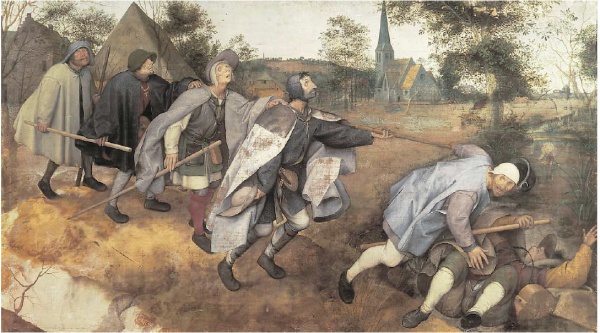Facts About The Blind Leading the Blind
"The Blind Leading the Blind" is a mesmerizing painting by Pieter Bruegel the Elder, created in 1568. It visually narrates the Biblical parable of the blind leading the blind, and this exceptional piece resides at the Museo di Capodimonte in Naples, Italy.
What makes this painting so compelling is Bruegel's meticulous attention to detail. He depicts six blind men, each with different eye conditions, arranged in a diagonal line that evokes a sense of movement. This composition not only guides the viewer's gaze across the painting but also imparts a dynamic quality to the scene. The precision and intricacy in the depiction have garnered high acclaim, influencing literary giants such as Charles Baudelaire and William Carlos Williams.
Bruegel’s choice of distemper on linen canvas showcases his skillful technique. His use of a muted color palette and dramatic composition underscores the desperate situation of the blind men. The painting mirrors the turbulent societal changes in 16th-century Europe, including significant religious and social upheavals, which likely influenced Bruegel's somber tone.
The impact of "The Blind Leading the Blind" extends far beyond its era. Artists, writers, and scholars have drawn inspiration from Bruegel's distinctive depiction of movement and composition. The painting's symbolism, particularly the church in the background, has sparked much debate regarding its potential political and moral messages.
Over the years, "The Blind Leading the Blind" has inspired numerous works of poetry, novels, and other artistic adaptations, underscoring its enduring influence on the creative world. The painting's journey through various owners and collections has ultimately led it to its current home at the Museo di Capodimonte in Naples, where it is part of the esteemed Farnese collection.

 Switzerland
Switzerland